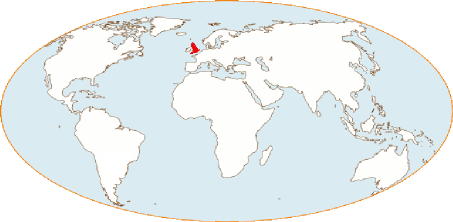Your search results [8 articles]
1 - The Romano-Brittonic tablets of Vindolanda (1st- 2nd centuries)
The tablets discovered in Vindolanda are of great historical value. Some of them document brewing issues in Roman times. The Roman fort was built at Vindolanda before Hadrian's wall, which erection has started in 122 AD. This military outpost (castrum) was built during the campaign of the Roman army towards the North, decided by Emperor Hadrian. Most of the tablets discovered at Vindolanda since 1973 are slightly more recent. They are the oldest handwritten documents in Britain to date. They are inscribed on thin sheets of wood with a gummed water-based carbon ink. The documents concern military information. But they also contain personal messages from or for members of the Vindolanda garrison, their families and their slaves. They provide some details about their daily life and the material culture of a Roman garrison. In 2010, 752 tablets were transcribed, translated and published. The discovery of more tablets at Vindolanda continues to enrich this corpus.
About a dozen tablets concern the brewing and the beer drunk by the soldiers and civilians of the garrison. Most of the soldiers belong to the 9th cohort (unit of a legion) of Bataves led by the prefect Flavius Cerialis. They come from the romanized provinces of the continent. Batavia roughly matches today's Netherlands. It has been said of the Batavians that they came to Britannia with their habit of drinking beer. But the Celtic islanders - the Britons - were also beer-loving brewers for centuries, long before the Roman conquest.
The Vindolanda archives tell us about the Romano-British culture that formed in Great Britain after the Roman conquest of 43 and the creation of the province of Britannia. This culture merged the indigenous Briton peoples of Celtic language and culture with populations from the mainland provinces (soldiers, slaves, craftsmen and traders), who were themselves subjected to the Roman culture imported by the military and administrative elites. The local and continental beer cultures were amalgamated in a military context. They also rubbed shoulders with the wine culture from southern Europe. This explains why beer and wine are mentioned, side by side, on the same documents.
The wine could have come from Gaul or perhaps from the south of Britannia, but the beer was brewed locally and sold by traders and civilian brewers to the Roman authorities. Vindolanda documents highlight many interesting features of the brewing techniques: the malting of barley or wheat, the sale of spent grains by the brewers, the large volume of beer supplied to the Roman army, the activity of specialised local craftsmen engaged in the production of beer, professional brewers and maltsters.
The Vindolanda's archives deny the opposition, so commonly raised by the Roman elite and modern historians, between the Italian wine culture and the so-called barbaric beer culture. The Vindolanda tablets reflect the economic and daily life in a distant, newly founded Roman province, not the viewpoint of literate Roman authors living in the heart of the Roman Empire. Away from Rome, the Roman military elite drink beer or wine. The native soldiers drank beer spontaneously, but also wine when they could. The local civilians or merchants operating on behalf of the military actively trade in brewer's grain, malt and spent grains (dregs). The fort and garrison of Vindolanda attract merchants, brewers and consumers, both men and women. This beer trade was not created by the garrison of Vindolanda. It did exist, organised and very much alive, before the arrival of the Romans, as the Celtic names of the brewers and maltsters prove. The garrison became a melting pot of Celtic and Romanised people, a sort of cultural crossroads.
 Example of a tablette discovered on the site of Vindolanda (tablet 291)
Example of a tablette discovered on the site of Vindolanda (tablet 291)
Wooden tablets have been found in about twenty Roman colonies in Great Britain. A significant number of tablets inscribed in ink have been identified at Carlisle, near the Hadrian's Wall (Birley 2005). However, most of these sites have instead produced writing made with pointed metal styluses. The fact that letters were sent from Hadrian's Wall forts to Catterick, York and London (Franklin 2002, 42-45) is based on an extensive network of towns and forts linked by Roman roads. These roads are not only used as military routes. They were used to transmit rapid messages (tablets carrying written accounts and letters), and to transport and exchange goods, especially grain, meat and clothing. The territory of Britannia under Roman control suggests that data on the brewing of beer and the role of this beverage could be verified beyond Vindolanda between the 1st and 5th centuries, in the entire Britannia, with the exception of the northern territories where the undefeated peoples lived beyond Hadrian's Wall. Vindolanda is exactly located on this border (map of Britannia).



